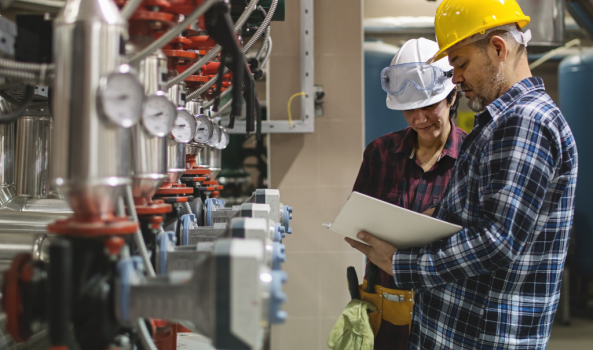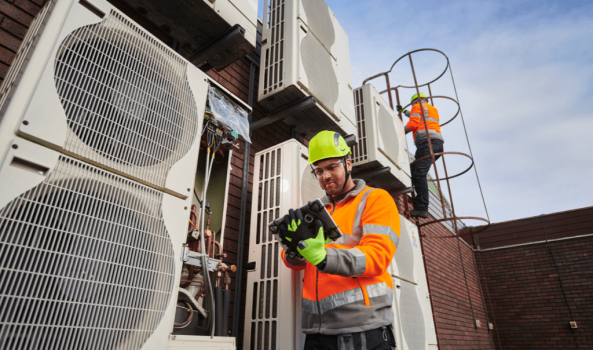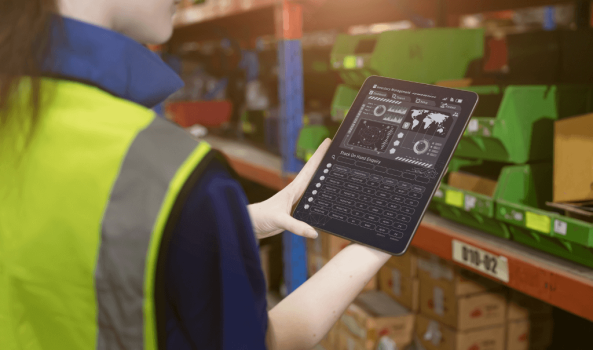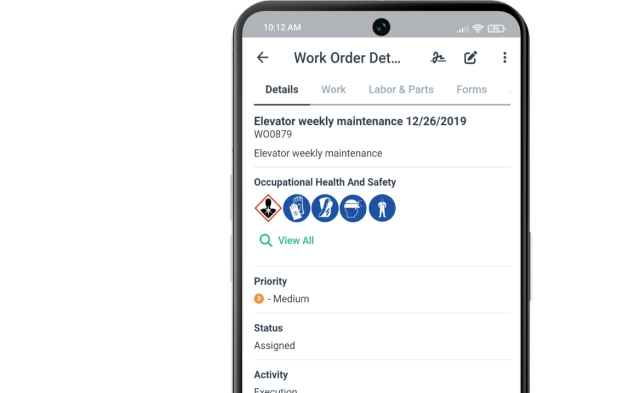Get a Free WorkTrek Demo
Let's show you how WorkTrek can help you optimize your maintenance operation.
Try for freeKey Takeaways
- Predictive maintenance market growing from $10.93B (2024) to $70.73B (2032) at 26.5% CAGR
- 95% of adopters report positive ROI, with 27% achieving full amortization within one year
- Organizations achieve 25-30% maintenance cost reduction and 35-50% downtime reduction
- 10x return on investment possible with comprehensive CMMS implementation
The global predictive maintenance market is experiencing unprecedented growth, reaching $10.93 billion in 2024 and projected to surge to $70.73 billion by 2032 at a compound annual growth rate of 26.5%.
This expansion is a fundamental shift in how organizations approach equipment management, moving from reactive firefighting to intelligent, data-driven maintenance strategies.
What is even more amazing is that 95% of predictive maintenance adopters report positive ROI, with 27% achieving full amortization within just one year, according to recent industry studies.

For maintenance organizations, the stakes couldn’t be higher.
On average, industrial manufacturers lose $50 billion annually to unplanned downtime, with median costs exceeding $125,000 per hour across industries.
In semiconductor manufacturing, each hour of unexpected downtime costs over $1 million.
Given these staggering statistics, it is clear that traditional maintenance methods cannot compete with the precision and efficiency of modern predictive maintenance solutions that can reduce maintenance costs by 25-30% while cutting unplanned downtime by 35-50%.
As we look toward 2025 and beyond, eight transformative trends we are covering in this article are reshaping the predictive maintenance landscape.
1. Artificial intelligence (AI)
AI is dominating the news. AI, built on machine learning algorithms, has reached a tipping point for the maintenance industry.
Based on a recent study, AI-driven predictive analytics can increase failure prediction accuracy up to 90% while reducing maintenance costs by 12%.
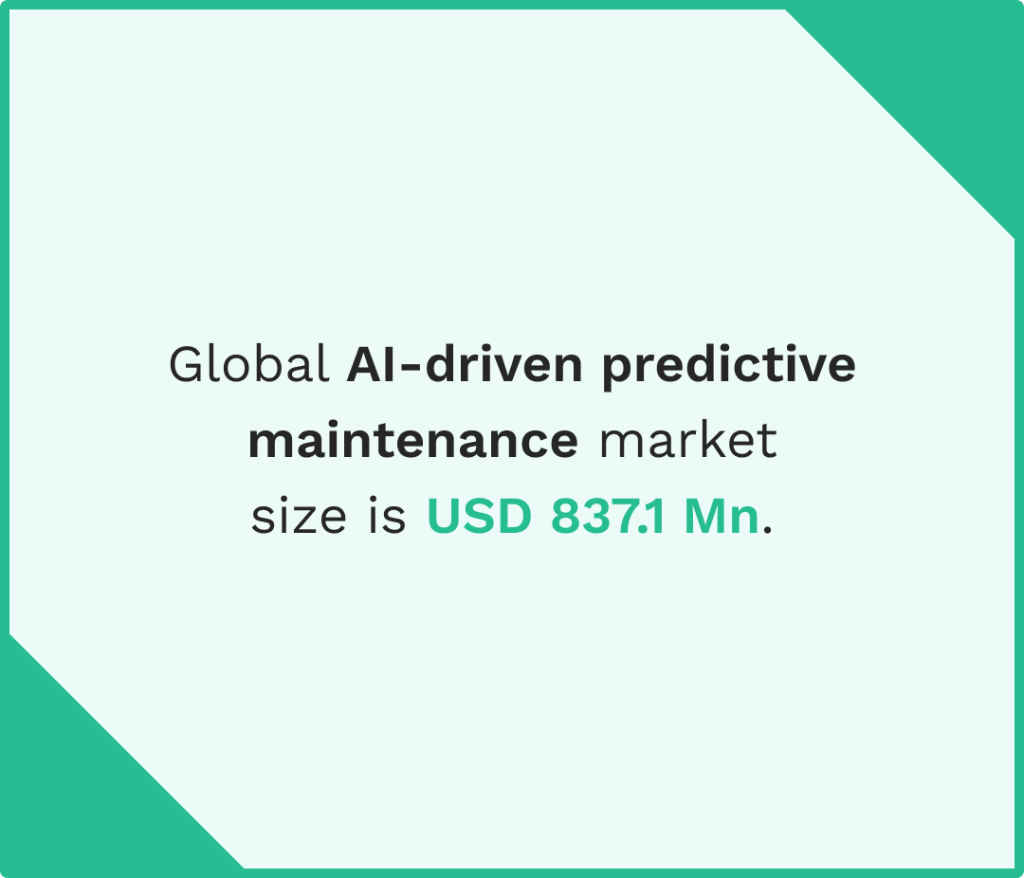
Modern machine learning algorithms can quickly analyze large quantities of sensor data, historical maintenance records, and operational parameters. Using this data, these models can identify patterns invisible to human operators.
Companies have already started implementing AI-powered predictive maintenance solutions. Recent reports show dramatic improvements in operational performance.
Industry Studies
One example is Rolls-Royce. Using AI-powered predictive analytics, they managed to cut costs by 30%.
Another study shows that data centers utilizing neural networks achieved a 30% reduction in false alarms and 40% increase in detection accuracy.
The AI systems are designed not only to process data, but also to learn from it continuously. This helps improve future failures.
Technology Behind Predictive Maintenance
What powers predictive maintenance and the technology behind it revolves around advanced machine learning algorithms, particularly Long Short-Term Memory (LSTM) deep learning networks.

This new approach can significantly enhance the accuracy of predictive maintenance compared to traditional statistical methods.
One recent study shows that these systems are smart enough to predict equipment failures with weeks of advance notice.
This enables maintenance teams to plan interventions during scheduled downtime, rather than responding to emergency breakdowns.
What makes AI particularly powerful in predictive maintenance is its ability to identify subtle correlations across multiple data points that would otherwise go unnoticed.
By analyzing vibration patterns, temperature fluctuations, energy consumption, and dozens of other variables simultaneously, AI systems create comprehensive equipment health profiles that enable unprecedented predictive insights.
2. Internet of Things (IoT)
IoT is transforming how organizations monitor their physical assets.
The technology is projected to go through explosive growth. That expansion is currently projected at a 28% compound annual growth rate according to a recent study by Prom Wad Electronics Design.
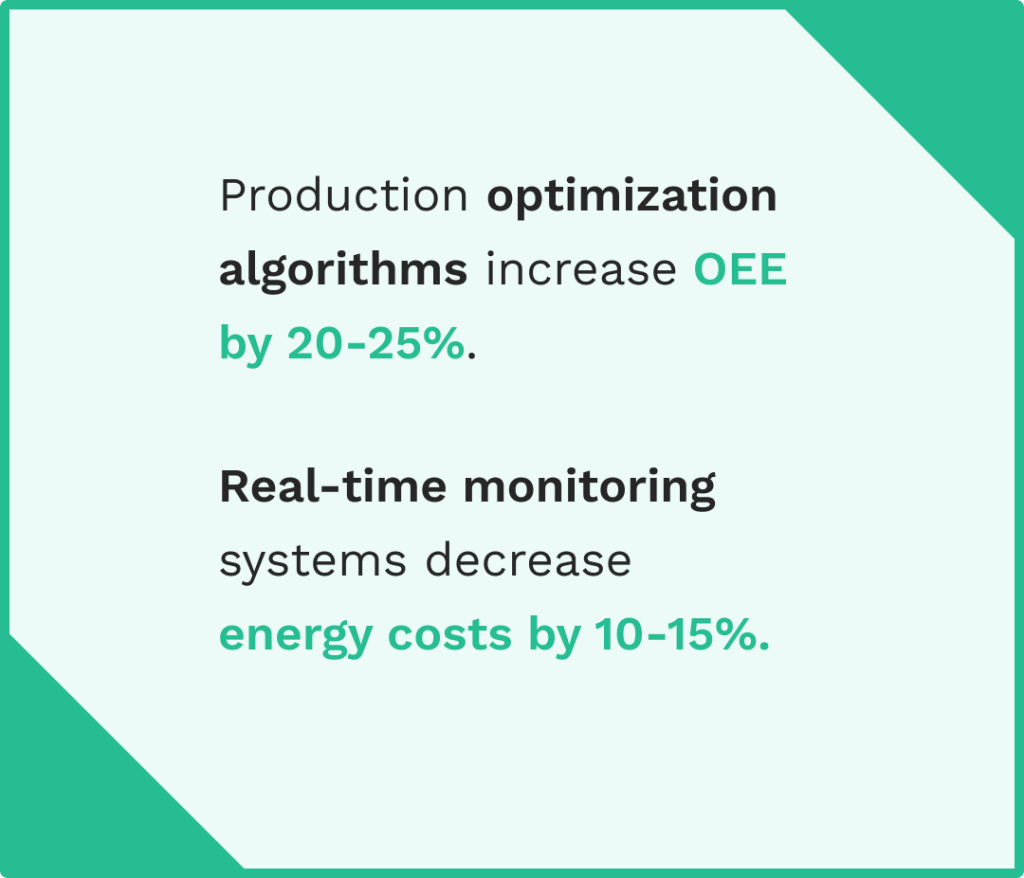
Modern facilities now deploy thousands of sensors across their equipment. This helps create a comprehensive monitoring networks that provide 24/7 visibility into asset health and performance.
What can IoT track?
What are some of the IoT devices that can be used in predictive maintenance? The list of devices includes:
- Temperature Sensors
- Vibration Monitoring Sensors
- Acoustic & Ultrasonic Sensors
- Pressure Monitors
- Electrical & Power Monitoring Devices
- Pressure and Flow Sensors
- Oil and Lubrication Sensors
Depending on the type of equipment you are tracking, either some or all of these devices can help improve predictive maintenance.
Benefits to Maintenance Organizations
According to a recent study by Deloitte, companies adopting sensor-driven predictive maintenance reduce unplanned downtime by up to 25%.
This was accomplished by eliminating the need for time-consuming manual inspections, thereby saving a significant number of labor hours.
These systems can instantly detect anomalies that indicate impending failures, triggering automated alerts and work orders.
ThyssenKrupp improved elevator service reliability by 50% through IoT-connected predictive maintenance.
What this demonstrates is that IoT can enhance both operational efficiency and customer satisfaction.
Wind turbine operators are achieving even more dramatic results, with some companies saving $200,000 per turbine annually through IoT-enabled condition monitoring that predicts component failures before they cause catastrophic damage.
This level of sophistication of modern IoT sensors can greatly extend what is achievable via simple threshold monitoring.
3. Digital Twins
Digital twin is an emerging technology that has the potential to transform predictive maintenance.
What exactly is a digital twin? Think of it as a digital replica of a physical asset. This enables maintenance teams to perform simulation, testing, and optimization without disrupting actual operations.
Benefits of Digital Twins
Several industries have started to implement digital twins. That’s mainly because organizations can garner significant cost savings using them.
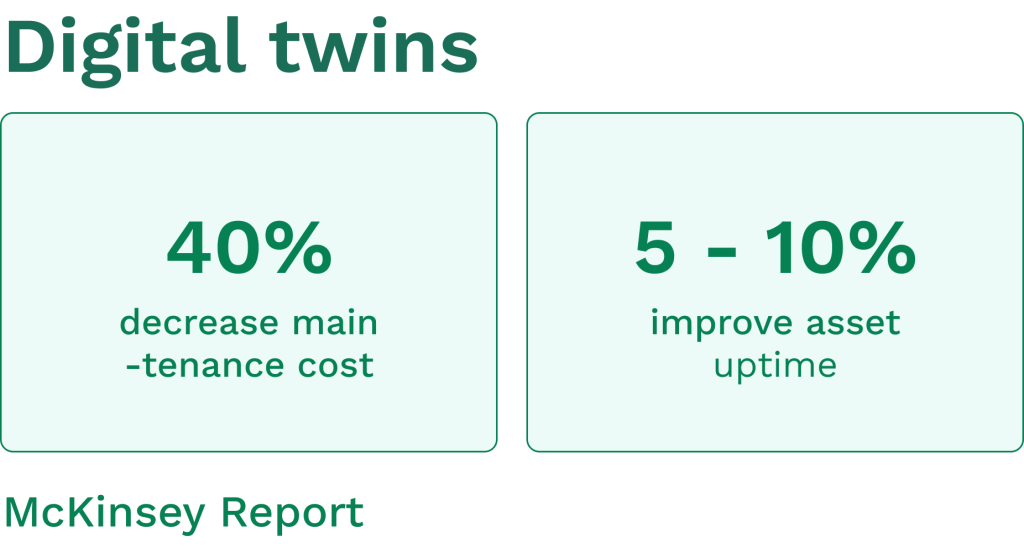
GE Digital estimates digital twins could cut equipment downtime by 30%. This can represent millions in potential savings for asset-intensive organizations.
By using real-time data, these virtual models mirror the exact conditions of their physical counterparts.
This enables maintenance teams to simulate various scenarios and predict the impact of different maintenance strategies.
One industry that has adopted digital twins is the petrochemical industry. Aircraft manufacturers have also started to utilize this technology. Both industries have implemented digital twins to improve the performance of monitoring and maintenance planning.
Power of Digital Twins
One of the powers of a digital twin strategy lies in its ability to combine historical data, real-time sensor information, and predictive modeling into comprehensive asset management platforms.
For instance, COMPREDICT partnered with Renault Group to develop virtual sensor-based predictive maintenance systems.
These systems can predict component failures without physical sensors, dramatically reducing monitoring costs while maintaining prediction accuracy.
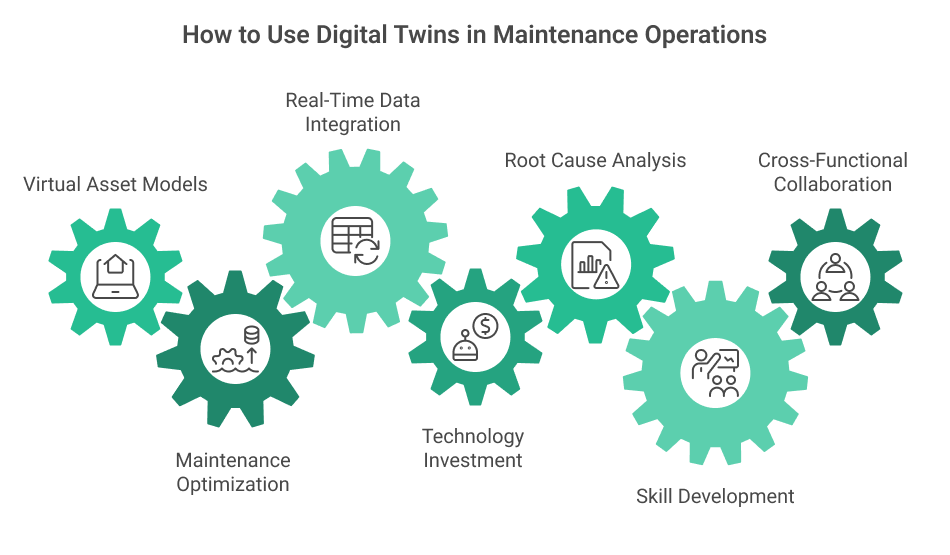
Digital twins also enable advanced data analysis optimization techniques that were previously considered impossible.
For example, maintenance teams can test different replacement schedules, compare various maintenance approaches, and identify optimal timing for interventions within the virtual environment.
These tests can be accomplished without affecting production systems or slowing down production.
4. Edge Computing
Cloud computing has been the primary driver of technological progress over the past decade. However, there are downsides to cloud computing when it comes to managing physical assets or IoT devices.
Enter edge computing. This approach is a fundamental change in how predictive maintenance systems process and respond to equipment data.
Instead of communicating with the cloud system, edge computing moves that computing power to the equipment level.
Edge computing can significantly accelerate anomaly detection while minimizing network latency. This approach not only reduces overall bandwidth and cloud costs but also has the potential to reduce response times for critical maintenance decisions.

IDC predicts 50% of enterprise data will be processed at the edge by 2025, driven primarily by the need for instantaneous responses in industrial environments.
One example is manufacturing facilities that are implementing edge computing solutions that can analyze vibration patterns locally and trigger immediate equipment shutdowns when dangerous conditions are detected.
Analyzing this data at the edge can drastically improve response times.
Ideal Environments for Edge Computing
Edge computing offers particular advantages in environments with limited connectivity or where latency is critical.
For example, remote mining operations utilize edge computing for autonomous equipment monitoring. These are areas where connectivity is limited or expensive to implement.
Another industry utilizing edge computing is healthcare. Critical assets, such as monitoring and imaging equipment, can generate huge volumes of data. Instead of transferring this data to cloud systems, healthcare companies can perform immediate analysis.
One primary reason to implement edge computing is data security. Healthcare data is highly sensitive and heavily regulated by laws like HIPAA. Keeping data closer to the source reduces exposure and helps maintain data sovereignty.
Real Time Insight
Since the data collection and analysis are local, edge computing enables more sophisticated predictive maintenance algorithms to provide real-time insight. AI and machine learning algorithms can access this data quickly without network latency.
Some advanced systems can provide alerts and prevent failures within seconds or minutes of detection, which can give you improved operational efficiency.
For any high-speed manufacturing process, where delays can cause significant production loss, this capability is essential.
A recent study shows that by 2025, nearly 50% of enterprise-generated data will be processed at the edge.
5. Augmented and Virtual Reality
Augmented and virtual reality technologies are transforming how maintenance teams work. These technologies can be used to help with training and learning how to perform complex procedures.
ABI Research reports AR adoption in industrial maintenance increasing 66% annually until 2025, with IDC projecting $4.1 billion investment in AR/VR for industrial maintenance by 2024
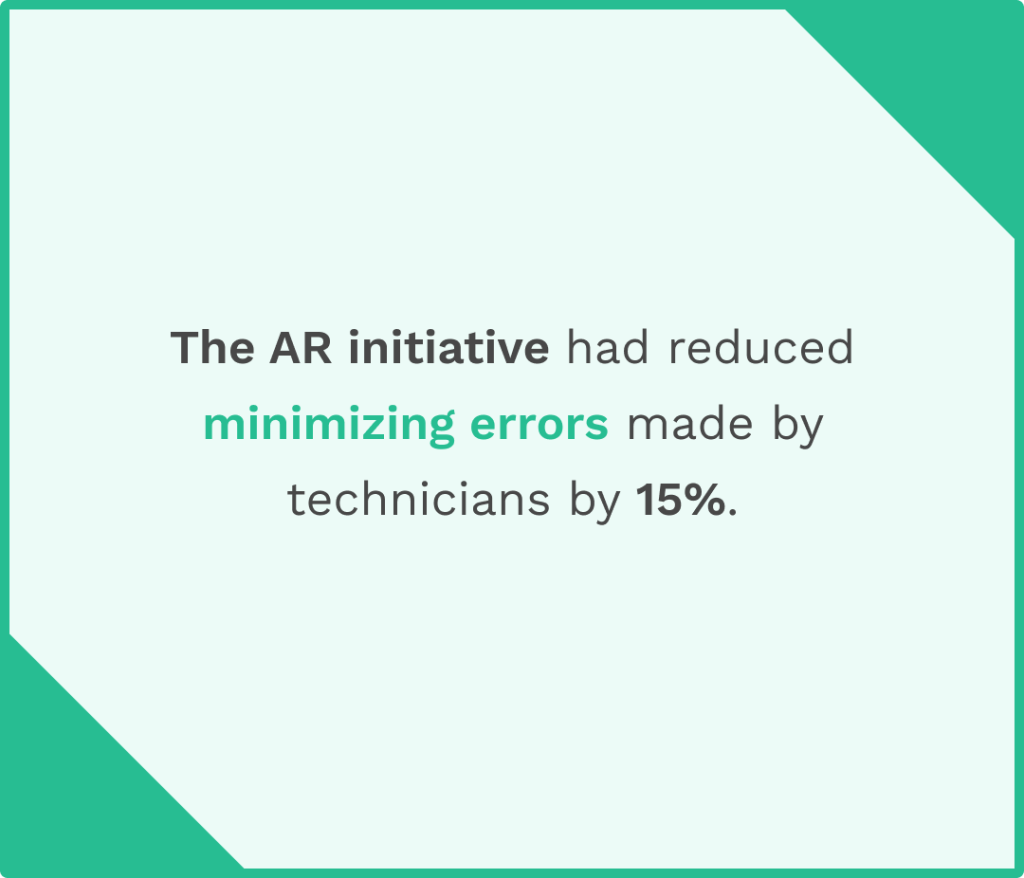
The main benefit of AR is that it provides maintenance technicians with hands-free access to real-time equipment data, interactive repair guides, and remote expert assistance.
Technicians wearing AR glasses can view IoT sensor data overlaid directly onto equipment, receive step-by-step maintenance procedures, and collaborate with experts located anywhere in the world (https://www.interal.com/en/iot-cmms/).
This technology is particularly valuable for complex procedures on critical equipment where precision is essential.
Virtual Training
Virtual reality creates risk-free training environments. This allows technicians to practice complex maintenance scenarios without expensive equipment or safety concerns.
One example is in the aircraft industry, where maintenance teams use VR simulations to train on emergency procedures and dangerous maintenance tasks. This type of training typically requires extensive practice before being applied in real-world situations.
Benefits of AR for Predictive Maintenance
With AR and VR, maintenance teams can create predictive maintenance systems that provide technicians with predictive insights, training, and execution guidance through integrated platforms.
This approach can significantly improve maintenance quality while reducing the time required to train new technicians on complex equipment.
6. Autonomous Maintenance Systems
Imagine a world where failing equipment fixed itself.
That’s where autonomous maintenance systems come in. They represent the next evolution in predictive maintenance, where AI-powered equipment can monitor itself, diagnose problems, and perform basic repairs without human intervention.
How does it work?
These self-healing systems combine predictive analytics with automated responses to prevent equipment failures before they occur.
Systems can automatically adjust operating parameters when sensors detect conditions that could lead to equipment damage.
For example, motors can automatically reduce their load when temperature sensors indicate overheating. HVAC systems can also adjust their operation based on performance data to prevent component wear.
The main benefit: these systems operate 24/7 without human oversight, while providing continuous protection for critical equipment.
Additional benefits
Autonomous maintenance is not only used for fixing equipment. It can be extended beyond simple parameter adjustments to include autonomous maintenance scheduling and parts ordering.
Some advanced systems can predict when components will need replacement, automatically generate work orders, and even order replacement parts from suppliers based on predictive algorithms.
7. 5G Connectivity
Traditionally, connectivity has been a barrier to deploying predictive maintenance. With the wide deployment of 5G connectivity, that barrier has been reduced.
5G networks now cover 51% of the world population with ultra-low latency and massive device connectivity capabilities essential for comprehensive predictive maintenance systems.
Benefits of 5G Connectivity
Manufacturing facilities can now connect thousands of sensors through 5G networks without bandwidth limitations. This creates a comprehensive monitoring ecosystem that was previously impossible.
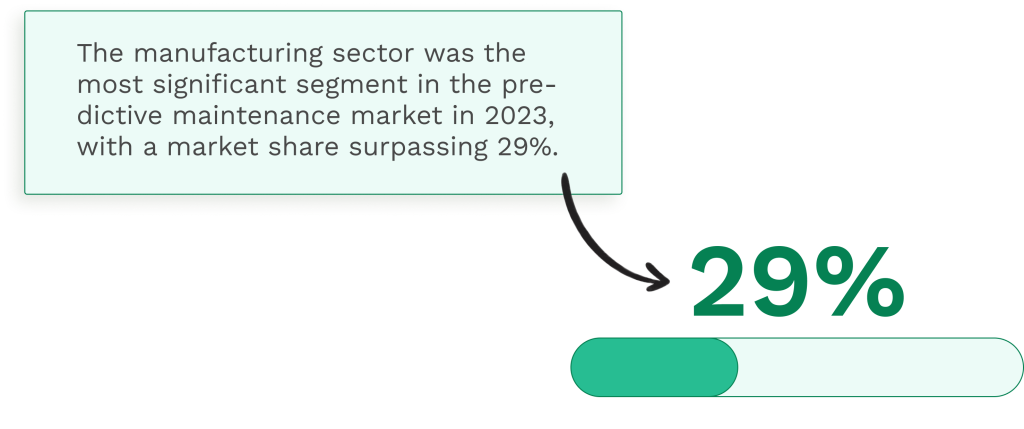
The technology can also support millions of connected devices per square kilometer while maintaining the ultra-low latency required for real-time maintenance responses.
One area of maintenance that benefits from 5G connectivity is remote operations. Industries such as mining, offshore oil exploration, and construction have been demanding to monitor remotely.
With 5G technology, organizations can easily create remote monitoring staging, which can reduce travel costs.
Industry Example
One example is the use of 5G in mining operations for monitoring autonomous equipment. These facilities leverage the technology for continuous asset monitoring and remote maintenance support. This is one of the ways that the oil and gas industry is cutting back on maintenance costs and reducing injury.
Ericsson has successfully enabled predictive maintenance applications through 5G cellular networks. This approach demonstrates the technology’s ability to support industrial applications with mission-critical reliability requirements.
With 5G’s communication capabilities, organizations can enable more sophisticated maintenance collaboration.
This is enabled by allowing remote experts to assist field technicians through high-quality video connections and augmented reality applications.
8. Sustainability and Green Maintenance Practices
Environmental considerations are becoming central to predictive maintenance strategies as organizations seek to minimize their carbon footprint while reducing operational costs.
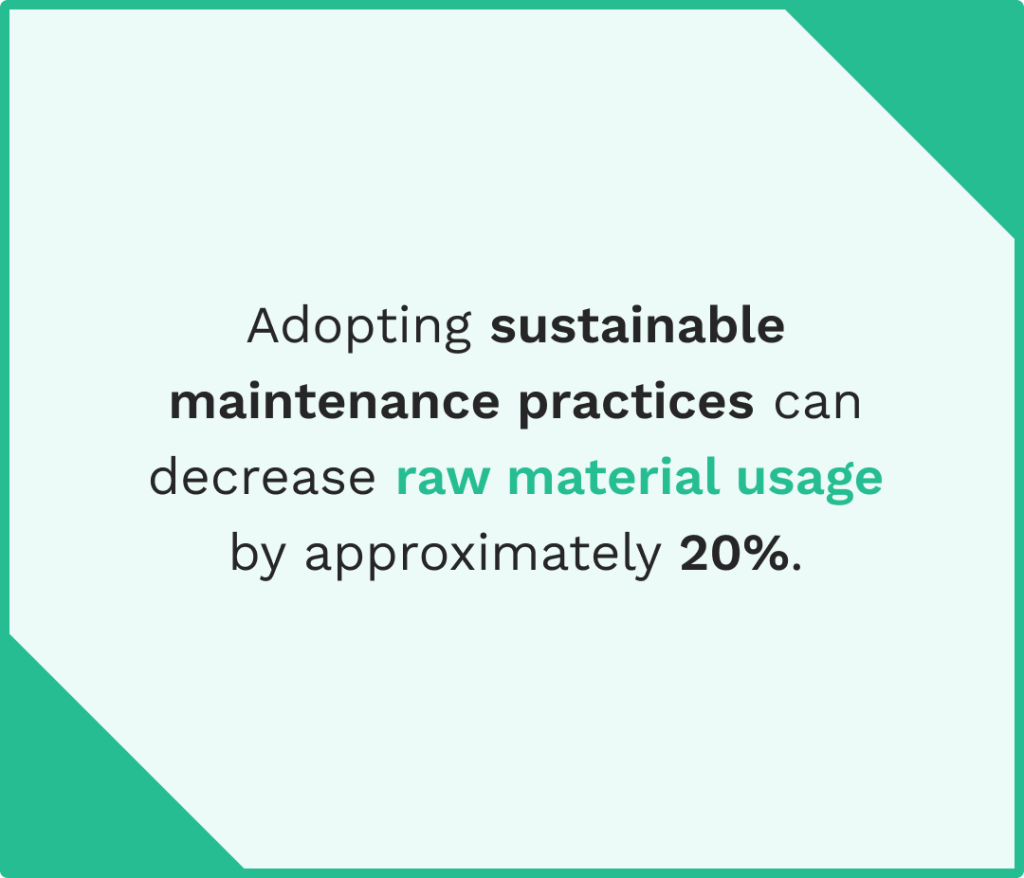
Based on recent studies, companies implementing energy efficiency improvements through predictive maintenance see average cost savings of 15%.
This is accomplished while simultaneously reducing their environmental impact.
Reduce Equipment Energy Use
Green maintenance practices make minimizing energy consumption a focal point of maintenance strategy.
Aside from reducing energy consumption, green energy practices can minimize costs, extend asset lifespan, and reduce waste.
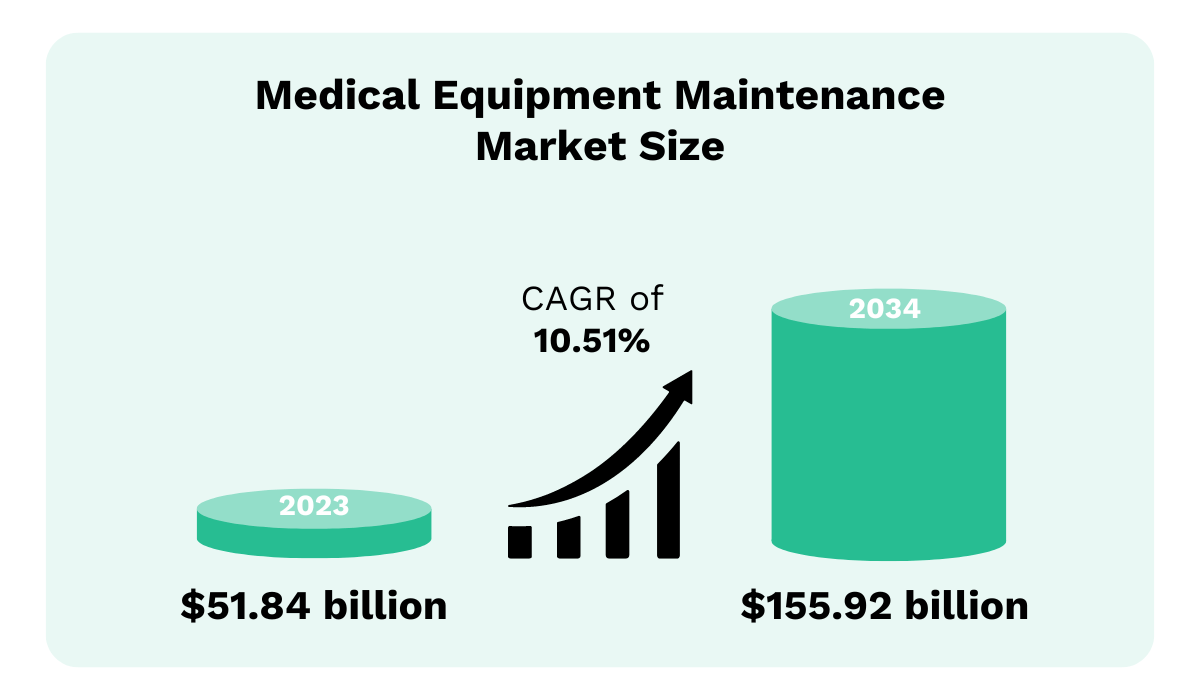
One approach is to implement smart energy management systems that integrate with predictive maintenance platforms. These systems can identify opportunities for efficiency improvements while maintaining optimal equipment performance.
Another benefit is that predictive maintenance supports sustainability goals by preventing catastrophic failures that often result in significant environmental damage and waste.
How does it work? By predicting and preventing equipment failures, organizations avoid emergency repairs that typically require extensive resource consumption and generate significant waste.
Additionally, the technology enables more precise maintenance timing, minimizing the need for replacement parts and consumables.
Renewable energy integration is becoming standard in maintenance facilities, with solar panels and energy storage systems supporting maintenance operations while reducing carbon footprints.
Organizations are also implementing carbon footprint tracking within their maintenance management systems.
This enables them to quantify and optimize the environmental impact of their maintenance activities.
How CMMS powers Predictive Maintenance
It will be nearly impossible to implement a preventive maintenance program without a modern Computerized Maintenance Management System like WorkTrek.
CMMS is the foundation for successful predictive maintenance implementations, providing the integration, automation, and analytics capabilities necessary to transform sensor data into actionable maintenance insights.
One study showed that organizations implementing CMMS-enabled predictive maintenance achieve up to 40% cost reduction and 75% equipment downtime reduction.
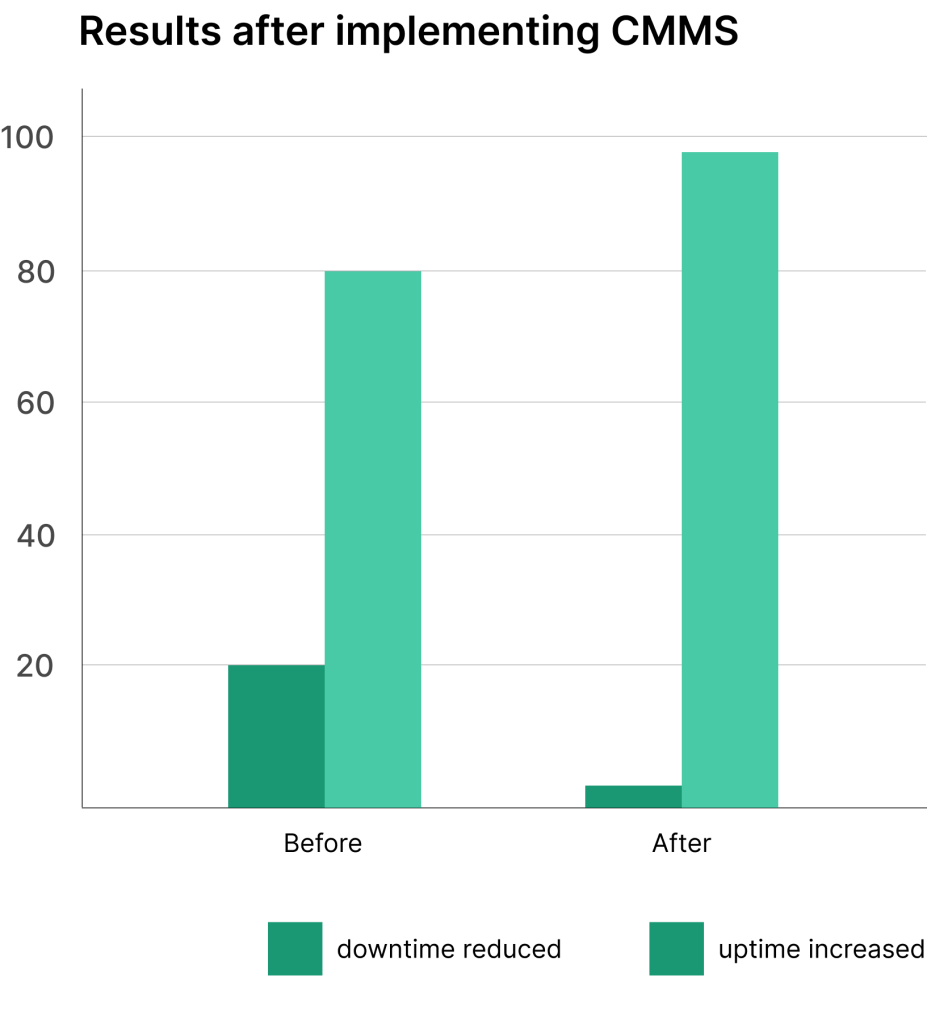
CMMS platforms excel at integrating diverse data sources, from IoT sensors and monitoring systems. This system can then store and analyze this data to provide a unified asset management ecosystem.
These systems can connect and automatically collect real-time sensor data, analyze trends and patterns, and generate predictive alerts when equipment conditions indicate potential failures.
With its comprehensive approach to maintenance management, WorkTrek CMMSstands out as an ideal predictive maintenance solution.
With a high-performance cloud-based architecture, WorkTrek provides the scalability necessary for large-scale IoT. This is done while maintaining the reliability required for mission-critical maintenance operations.
WorkTrek’s mobile application ensures that maintenance teams can access predictive insights anywhere. This enables immediate responses to equipment alerts and optimized maintenance scheduling.
The platform’s API connectivity enables seamless integration with IoT devices and monitoring systems.
Additionally, WorkTrek’s analytics and reporting capabilities put the necessary predictive maintenance data at your fingertips.
Organizations can track key performance indicators, including downtime reduction, maintenance cost savings, and asset availability improvements, through comprehensive dashboards designed for both operational and executive audiences.
Business reasons to adopt predictive maintenance
If you are a maintenance manager, how do you make the business case for predictive maintenance?
Improved Equipment UpTime
You can start by looking at industry statistics. For example, companies report 10-20% increase in equipment uptime and availability.
This is alongside a significant reduction in emergency maintenance situations and unplanned production interruptions.
Optimized Resource Utilization
With predictive maintenance, teams benefit from more efficient resource utilization. A recent study shows a 20-50% reduction in maintenance planning time. This is accomplished by increasing maintenance technician productivity through optimized maintenance schedules.
Reduce Spare Parts Cost
Predictive insights enable just-in-time maintenance approaches that minimize inventory carrying costs. Due to its predictive capabilities, you only get parts when they are needed rather than storing them in your storage room.
Using demand forecasting, organizations report 5-10% inventory cost reduction through improved demand forecasting and optimized parts management.
Improved Quality and Improved Safety
Quality improvements represent another significant benefit. Some manufacturers report achieving 33% reduction in quality defects through predictive maintenance programs.
With predictive maintenance, organizations can improve safety by identifying potential hazards early.
Financial Impact
The financial impact extends beyond direct maintenance savings. It includes improved customer satisfaction and enhanced brand reputation.
Organizations implementing predictive maintenance position themselves as industry leaders while building the operational excellence necessary for long-term success in increasingly competitive markets.
Conclusion
The eight trends shaping the future of predictive maintenance are a fundamental transformation in how organizations manage their physical assets and optimize their maintenance operations.
From AI-driven analytics that predict failures with unprecedented accuracy to autonomous systems that can heal themselves, these technologies are creating opportunities for operational excellence that were unimaginable just a few years ago.
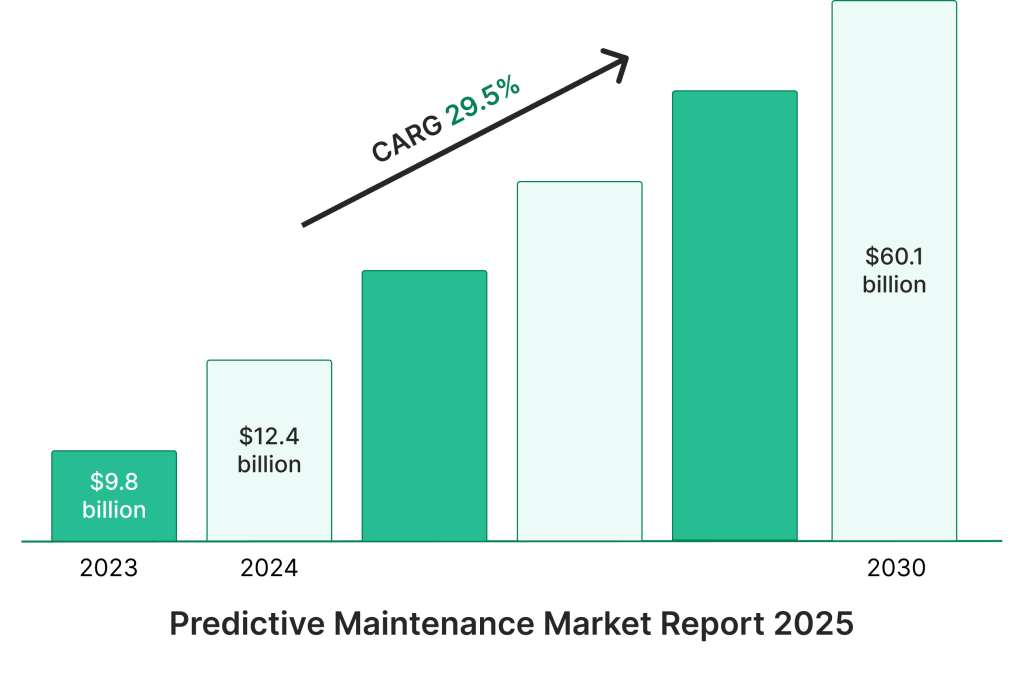
The statistics speak for themselves:
- 95% positive ROI adoption rates,
- 10x returns on investment
- 25-50% reductions in downtime and maintenance costs
Organizations that embrace these trends will be industry leaders. On the other hand, if you delay adoption of predictive maintenance, you risk falling behind competitors who have already realized the transformative benefits of modern predictive maintenance solutions.
By implementing these eight trends through comprehensive platforms like WorkTrek, maintenance teams can transform their operations, reduce costs, and improve reliability. All of this helps build the foundation for sustained operational excellence in an increasingly competitive global marketplace.





